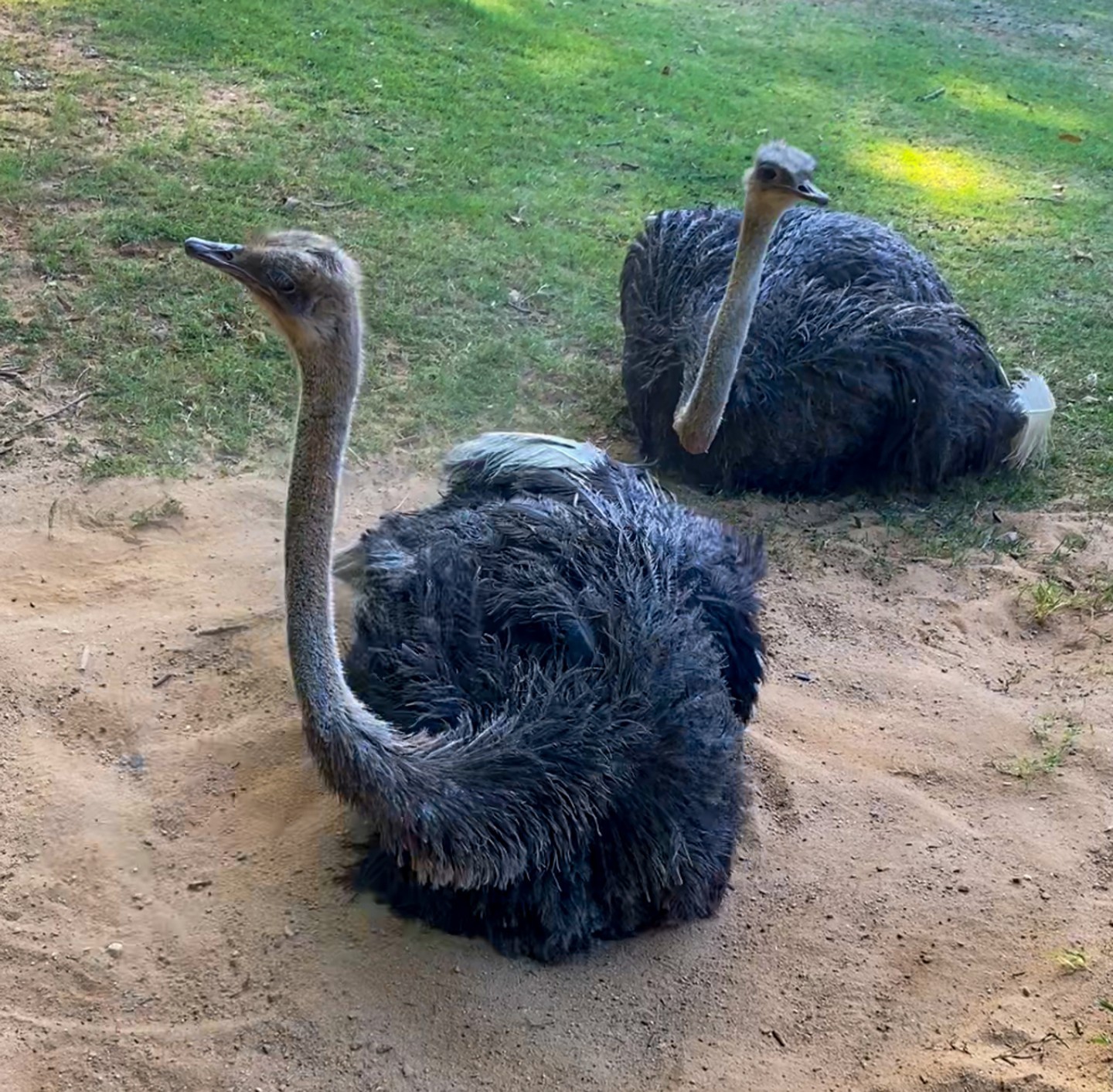- Integration of ostriches into habitats with giraffe and zebra at the zoo.
- The role of zoos in wildlife conservation and biodiversity.
- The social behavior of ostriches and their interaction with other species.
- The significance of habitat design and management in zoos.
- The broader implications for education and public awareness in zoo settings.
In a delightful return, two ostriches have been reintroduced to the zoo habitat they share with giraffes and zebras, bringing excitement and educational opportunities. This event underscores the dynamic role that modern zoos play in conservation, animal welfare, and public education. Each species in the zoo offers visitors a glance at the ecological interactions that occur in natural habitats.
The inclusion of ostriches within this environment presents a unique opportunity to study avian behavior in a mixed exhibit space. These large, flightless birds, native to Africa, are known for their speed and powerful legs. They thrive in savanna and desert habitats where they coexist with numerous animal species, including giraffes and zebras. Their return to the zoo habitat offers a chance to observe how disparate species interact and contribute to ecosystem dynamics.
Zoos contribute significantly to the conservation of species through breeding programs, habitat restoration, and public education. By providing a sanctuary for animals that may be at risk in the wild, zoos engage in crucial species preservation efforts. Furthermore, by creating environments that mimic natural habitats, they help animals express natural behaviors. This goal aligns with broader biodiversity conservation efforts, which aim to maintain healthy ecosystems worldwide.
The social dynamics of ostriches are fascinating. They are typically found in small social groups in the wild, which aids in their survival by offering protection from predators. In the zoo, their interactions with giraffes and zebras will be closely monitored by zookeepers and researchers. These interactions can provide insights into the adaptability and social structures of ostriches. For instance, the ostrich’s keen eyesight and alertness are beneficial in predator detection, aspects that may directly impact the behavior of other animals in their midst.
Habitat design in zoos is inherently complex, requiring careful thought to meet the diverse needs of various species. Factors such as terrain, plant life, and space must be considered to promote the physical and psychological well-being of the animals. For the ostriches, giraffes, and zebras, the habitat must accommodate their individual and collective needs. Giraffes, needing space to roam and high trees for foraging, coexist with the wide-open spaces ideal for ostrich sprinting and socialization with zebras.
The reintroduction of ostriches also underscores the zoo’s commitment to education and raising public awareness. By enabling visitors to observe these animals together, zoos offer educational experiences that can foster a deeper understanding of wildlife and ecosystems. Watching these interactions can inspire curiosity and concern for conservation efforts beyond the zoo’s confines, highlighting the interconnectedness of different species and their environments.
Humans have a pivotal part to play in wildlife conservation, both by supporting zoos in their efforts and undertaking individual conservation actions. As the challenges facing global biodiversity intensify, the information and experiences provided by zoos have never been more important. They remind us of our responsibility to preserve the planet’s rich tapestry of life, advocating for a future where humans live in harmony with nature.
Moreover, as we approach the dawn of 2025, these actions gain even more relevance. With the increasing pressures of urbanization and climate change, conserving biodiversity in zoos serves as a critical measure for safeguarding species. They provide refuges for animals that are threatened or extinct in the wild and create learning opportunities that can lead to further conservation initiatives.
The zoo’s innovative approaches in habitat design and animal care reflect a deep understanding of wildlife needs. This is evident in the integrated habitat of ostriches, giraffes, and zebras, which exemplifies the zoo’s commitment to animal welfare. It offers an immersive educational journey for visitors, enabling them to witness the symbiotic relationships that characterize natural ecosystems.
The return of the ostriches is a clear signal of thriving conservation practices. It emphasizes the need for zoos to not only care for individual species but to manage entire ecosystems within their facilities. This holistic approach ensures that animals are given environments that promote natural behaviors and interactions, thereby enhancing their quality of life and conservation potential.
As these two ostriches settle into their reintroduced habitat, they provide endless fascination for zookeepers, researchers, and visitors alike. Their presence alongside giraffes and zebras is not just an exhibit to be admired but a live demonstration of ecological unity. This arrangement serves as a model for future conservation and educational programs in zoos around the world.
In conclusion, the zoo’s reintegration of ostriches highlights several key aspects of zoo management and wildlife conservation. As we look toward a future marked by numerous environmental challenges, the role of zoos in supporting biodiversity and educating the public becomes ever more significant. By nurturing our understanding and appreciation of these magnificent living organisms, zoos are helping us pave the way for a more sustainable and harmonious world.
*****
Source Description
💛 TWO Ostriches back on habitat with the giraffe and zebra 🦓🦒💛
We know everyone missed the ostriches as much as we did! We are so glad these two girls are here at the Zoo.
Can you believe 2025 is only 2️⃣ days away?! 🤩🤯


